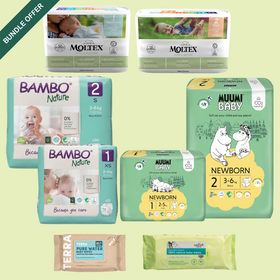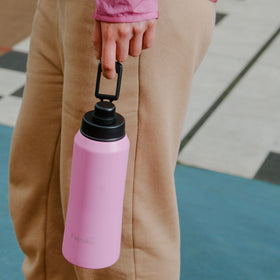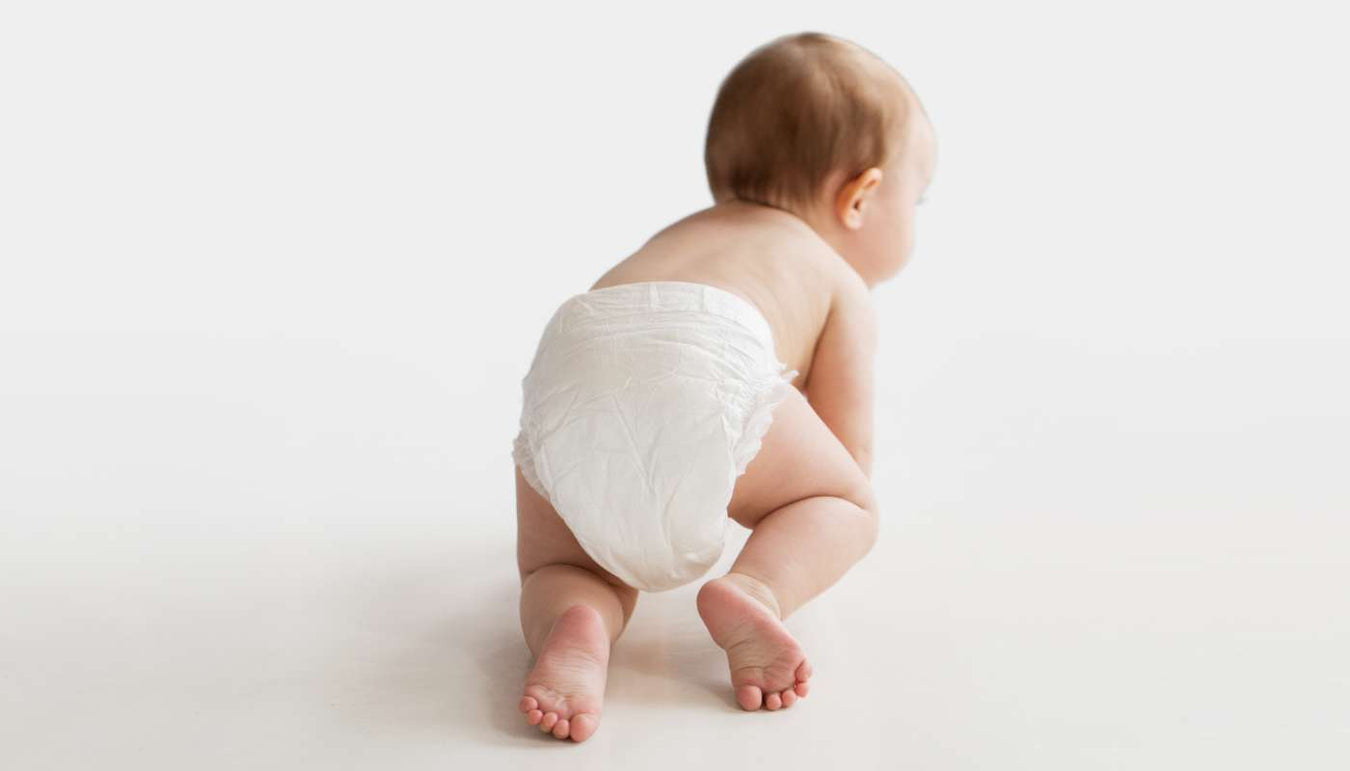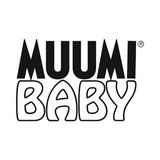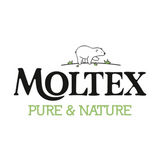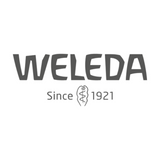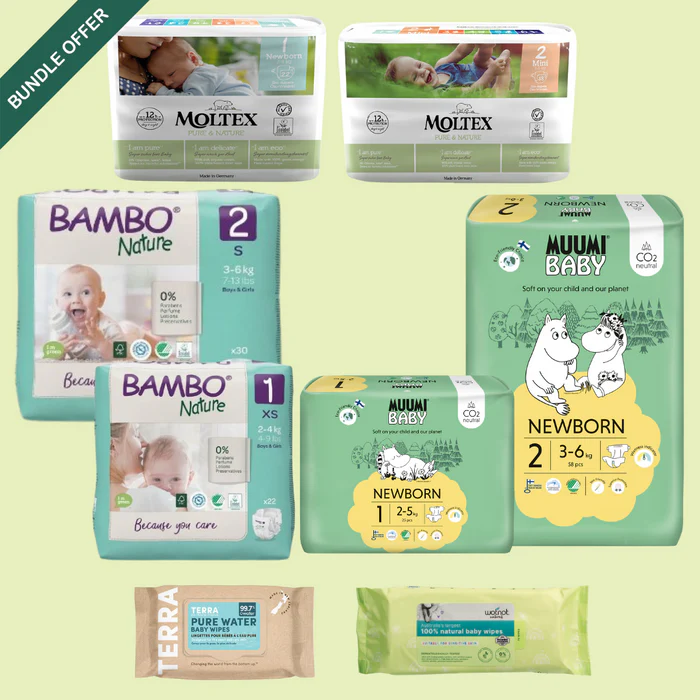
Most Loved Categories
Featured brand of this Month
Lion & Lady Stainless Steel Sippy Cup 210ml - Buttercup Yellow
Lion & LadyLion & Lady Sippy Cup 210ml with Silicone Spout - Buttercup Yellow Made from 18/8 stainless steel Grows with your child Supports oral motor sk...
View full detailsLion & Lady Stainless Steel Sippy Cup 210ml - Fuchsia Pink
Lion & LadyLion & Lady Sippy Cup 210ml with Silicone Spout - Fuchsia Pink Made from 18/8 stainless steel Grows with your child Supports oral motor skill ...
View full detailsLion & Lady Stainless Steel Sippy Cup 210ml - French Navy
Lion & LadyLion & Lady Stainless Steel Sippy Cup 210ml - French Navy Made from 18/8 stainless steel Grows with your child Supports oral motor skill devel...
View full detailsLion & Lady Stainless Steel Feeding Bottle Single 210ml - Buttercup Yellow
Lion & LadyLion & Lady 18/8 Stainless Steel Milk Bottle Single 210ml - Buttercup Yellow Made from 18/8 stainless steel Fast heating Built to last sterili...
View full detailsLion & Lady Stainless Steel Sippy Cup 210ml - Mint
Lion & LadyLion & Lady Stainless Steel Sippy Cup 210ml - Mint Made from 18/8 stainless steel Grows with your child Supports oral motor skill development ...
View full detailsLion & Lady Toddler Stainless Steel Straw Cup 210ml - Fuchsia Pink
Lion & LadyLion & Lady Straw Cup 210ml with Silicone Straw - Fuchsia Pink Made from 18/8 stainless steel Grows with your child Supports oral motor skill ...
View full detailsLion & Lady 18/8 Stainless Steel Toddler Straw Lid Bottle with Window 350ml - French Navy
Lion & LadyLion & Lady 18/8 Stainless Steel Kids Straw Bottle with Window 350ml - French Navy Made from 18/8 stainless steel No metallic aftertaste Easy ...
View full detailsLion & Lady Stainless Steel Feeding Bottle Single 210ml - Mint
Lion & LadyLion & Lady Stainless Steel Feeding Bottle Single 210ml - Mint Made from 18/8 stainless steel Fast heating Built to last sterilisations Ditch...
View full detailsLion & Lady Toddler Stainless Steel Straw Cup 210ml - Buttercup Yellow
Lion & LadyLion & Lady Straw Cup 210ml with Silicone Straw - Buttercup Yellow Made from 18/8 stainless steel Grows with your child Supports oral motor sk...
View full detailsLion & Lady 18/8 Stainless Steel Feeding Bowl with Silicone Suction Base
Lion & LadyUpgrade your child’s dining experience with the Lion & Lady 18/8 Stainless Steel Feeding Bowl—where convenience meets style. Perfect for famili...
View full detailsLion & Lady Anti Colic Silicone Teats Twin Pack - Extra Fast Flow
Lion & LadyLion & Lady Anti Colic Extra Fast Flow Teats - Twin Pack Food grade silicone teats Anti colic airflow design Helps reduce gas and colic If yo...
View full detailsLion & Lady 18/8 Stainless Steel Toddler Straw Lid Bottle with Window 350ml - Mint
Lion & LadyLion & Lady 18/8 Stainless Steel Kids Straw Bottle with Window 350ml - Mint Made from 18/8 stainless steel No metallic aftertaste Easy hydrati...
View full detailsLion & Lady Toddler Straw Cup Adaptors - Twin Pack
Lion & LadyLion & Lady Toddler Straw Cup Adaptors - Twin Pack Add food-grade silicone straws to turn your Lion & Lady Feeding Bottle into a straw cup ...
View full detailsLion & Lady Stainless Steel Feeding Bottle Single 210ml - Fuchsia Pink
Lion & LadyLion & Lady 18/8 Stainless Steel Milk Bottle Single 210ml - Fuchsia Pink Made from 18/8 stainless steel Fast heating Built to last sterilisati...
View full detailsLion & Lady 18/8 Stainless Steel Toddler Straw Lid Bottle with Window 350ml - Buttercup Yellow
Lion & LadyLion & Lady 18/8 Stainless Steel Kids Straw Bottle with Window 350ml - Buttercup Yellow Made from 18/8 stainless steel No metallic aftertaste ...
View full detailsLion & Lady Toddler Stainless Steel Straw Cup 210ml - French Navy
Lion & LadyLion & Lady Toddler Stainless Steel Straw Cup 210ml - French Navy Made from 18/8 stainless steel Grows with your child Supports oral motor ski...
View full detailsEco Essentials for Babies

Kids On-The-Go
SoYoung Ice Pack -Vintage Trucks
SoYoungSoYoung Ice Pack -Vintage Trucks Condensation free Washable cover Non toxic and food safe Gone are the days of soggy sandwiches and wet lunch bo...
View full detailsSoYoung Ice Pack - Little Hearts Sage
SoYoungSoYoung Ice Pack - Little Hearts Sage Condensation free Washable cover Non toxic and food safe Gone are the days of soggy sandwiches and wet lun...
View full detailsSoYoung Ice Pack - Jungle Cats
SoYoungSoYoung Ice Pack - Jungle Cats Condensation free Washable cover Non toxic and food safe Gone are the days of soggy sandwiches and wet lunch boxe...
View full detailsEcococoon Stainless Steel Cup Set - Urban Chic
EcococoonEcococoon Stainless Steel Cup Set - Urban Chic Urban Chic is for everyone...stylish and simple. Our 4 cup set includes 4 high polished plain 18/8 ...
View full detailsSoYoung Insulated Lunch Bag - Vintage Trucks
SoYoungSoYoung Cooler Lunch Bag - Vintage Trucks Insulated lunch bag for kids and adults Removable insert for easy cleaning Handy pocket for cutlery and ...
View full detailsWhat makes Hello Charlie Unique

Stock 100+ Eco Brands
Hello Charlie is your trusted source for safer, cleaner choices — from eco nappies to natural toys. We’ve carefully curated 100+ ethical brands so Aussie families can shop sustainably, all in one place.

Sustainable Packaging
Hello Charlie is committed to a sustainable future. We use eco-friendly packaging and offset carbon emissions to minimize our environmental impact.

Plant a Tree
Plant the seed of change with Hello Charlie. Your purchase helps us plant trees, restoring habitats, cleaning the air, and creating a healthier planet.

Transition to Eco Living
Embark on your sustainable journey with Hello Charlie. Our team provides valuable insights, tips, and reviews to help you live greener, one step at a time
Body & Beauty Refresh
Up to 40% offAcure Seriously Soothing Facial Cleansing Bar
AcureAcure Seriously Soothing Facial Soap Bar Gently cleanses and soothes Non comedogenic Great for sensitive skin The Acure Seriously Soothing Facial...
View full detailsAcure Seriously Soothing Jelly Milk Natural Makeup Remover
AcureAcure Seriously Soothing Jelly Milk Waterproof Makeup Remover Gentle and non irritating Removes all types of makeup Easy to rinse Acure Seriously...
View full detailsAcure The Essentials Hemp Seed Oil
AcureAcure The Essentials Hemp Seed Organic Facial Oil suitable for all skin types natural facial moisturiser lightweight and balancing Acure's hemp...
View full detailsAcure The Essentials 100% Plant Squalane
AcureAcure The Essentials 100% Plant Squalane - Natural Face Oil mimics skin's natural oils naturally antioxidant helps boost hydration Squalane is na...
View full detailsAcure Radically Rejuvenating Niacinamide Serum
AcureAcure Radically Rejuvenating Niacinamide - Natural Facial Serum lightweight and easily absorbed helps reduce redness evens skin tone This beautif...
View full detailsAcure Radically Rejuvenating Dual-Phase Bakuchiol Serum
AcureAcure Radically Rejuvenating Bakuchiol Anti Ageing Serum natural retinol alternative helps reduce the appearance of fine lines antioxidants to rej...
View full detailsAcure Radically Rejuvenating Witch Hazel Toner
AcureAcure Radically Rejuvenating Witch Hazel Toner For all skin types Organic facial mist Eases skin inflammation Acure Radically Rejuvenating Witch ...
View full detailsAcure Juice Cleanse Supergreens & Adaptogens Conditioner
AcureAcure Juice Cleanse Supergreens & Adaptogens Conditioner Rejuvenates tired hair 100% vegan conditioner Brightens and restores The Acure Juice...
View full detailsHurraw Lip Balm Papaya Pineapple
HurrawHurraw Lip Balm Papaya Pineapple Certified organic No artificial flavours or colours Vegan Nothing beats a tropical treat! Hurraw Lip Balm Papaya...
View full detailsHurraw PlantColor Natural Lip Colour - No. 3
HurrawHurraw Plant Based Lip Colour - No. 3 Made from 100% plant colour Nourishes and moisturises your lips Natural lipstick alternative When you don’t...
View full detailsHurraw PlantColor Natural Lip Colour - No. 2
HurrawHurraw Plant Based Lip Colour - No. 2 Made from 100% plant colour Nourishes and moisturises your lips Natural lipstick alternative When you don’t...
View full detailsHurraw PlantColor Natural Lip Colour - No. 1
HurrawHurraw Plant Based Lip Colour - No. 1 Made from 100% plant colour Nourishes and moisturises your lips Natural lipstick alternative When you don’t...
View full detailsHurraw Lip Balm Kapha - Grapefruit, Ginger, Eucalyptus
HurrawHurraw Lip Balm Kapha - Grapefruit, Ginger, Eucalyptus Ayuverdic Kapha dosha inspired lipbalm Grapefruit, eucalyptus and ginger scents Said to hel...
View full detailsHurraw Lip Balm Pitta - Coconut Mint Lemongrass
HurrawHurraw Lip Balm Pitta - Coconut Mint Lemongrass Ayuverdic Pitta dosha inspired lipbalm Coconut, lemongrass and peppermint scents Said to help enha...
View full detailsHurraw Lip Balm Tinted Raspberry
HurrawHurraw Lip Balm Tinted Raspberry Gorgeous sheer berry hue Purple carrot extract Nourishes and moisturises your lips Hurraw Lip Balm Tinted Rasp...
View full detailsHurraw Lip Balm Unscented
HurrawHurraw Lip Balm Unscented No added colour or flavour Creamy hydration for your lips With cold pressed meadow foam seed oil to moisturise your lips...
View full detailsHurraw Lip Balm Vata - Almond Cardamom Rose
HurrawHurraw Lip Balm Vata - Almond Cardamom Rose Ayuverdic Vata dosha inspired lipbalm Almond, cardamom and rose scented Said to help increase creativi...
View full detailsHurraw Lip Balm Moon Balm - Night
HurrawHurraw Lip Balm Moon Balm - Night Extra thick and rich formula for serious night moisturisation Natural vanilla and peru balsam scent for relaxati...
View full detailsHurraw Lip Balm Vanilla
HurrawHurraw Lip Balm Vanilla Sweet and simple vanilla in this gorgeous Hurraw Lip Balm. This lovely organic lip balm is infused with organic vanilla bea...
View full detailsHurraw Lip Balm SPF15 Tangerine Chamomile
HurrawHurraw Lip Balm SPF15 Tangerine Chamomile Prevent your lips from getting sunburnt while nourishing them with Hurraw Lip Balm SPF15 Tangerine Chamom...
View full detailsHurraw Lip Balm Tinted Black Cherry
HurrawHurraw Lip Balm Tinted Black Cherry Hurraw Lip Balm Tinted Black Cherry is fabulously tart and smells delicious (but do try not to eat it!). This g...
View full detailsHurraw Lip Balm Orange
HurrawHurraw Lip Balm Orange Nothing beats tangy, sun ripened oranges! Hurraw Lip Balm Orange provides you with hours of juicy orange freshness on your ...
View full detailsHurraw Lip Balm Mint
HurrawHurraw Lip Balm Mint Love the cool, refreshing smell of mint? Then you're going to love Hurraw's Mint Lip Balm. This awesome organic lip balm provi...
View full detailsHurraw Lip Balm Green Tea
HurrawHurraw Lip Balm Green Tea Who said green tea is just for drinking? Enjoy the wonderful matcha green tea essences with Hurraw Lip Balm Green Tea. Th...
View full detailsHurraw Lip Balm Grapefruit
HurrawHurraw Lip Balm Grapefruit Gorgeously rich with a slightly tart flavour, Hurraw Lip Balm Grapefruit. This organic lip balm glides smoothly on lips ...
View full detailsHurraw Lip Balm Coconut
HurrawHurraw Lip Balm Coconut What is the next best thing to freshly toasted coconut? Hurraw Lip Balm in Coconut! This fresh, creamy, coco-nutty lip bal...
View full detailsHurraw Lip Balm Chocolate
HurrawHurraw Lip Balm Chocolate A second on the lips and a lifetime on the hips? Not this chocolate! Hurraw Lip Balm in Chocolate is all organic and GMO-...
View full detailsBlog posts
-

World Environment Day 2025: Simple Ways Families Can Make a Real Difference with Eco-Friendly Brands
Read nowEvery year, World Environment Day brings people together across the globe for one simple reason—protecting the planet we all call home. Established by the United Nations in 1972, this day shines a spotlight on urgent environmental issues and inspires millions...
-

Should You Wash New Clothes Before Wearing Them?
Read nowFor some people, washing new clothes before wearing them is a no-brainer. For others, clothes will never look better or brighter than when they're still shop-fresh. But are new garments clean? Should new clothes be washed before wearing them, or...
-

Mother's Day Gift Guide: How to Spoil Mum with Eco-Conscious Goodness
Read nowAs Mother's Day draws near, we're faced with a familiar dilemma: what do you give to a woman who seems to have everything? This is not just a question of finding a material item but a way to express gratitude to...



